The story starts in the Ypres Salient of WW1, during the Battle for Polygon Wood on 26 September 1917. Two Australian brothers, John and James Hunter, would participate in that battle, and John would die in the arms of his brother James. Buried during the war in a makeshift grave, John’s body would not be re-found—for decades. Brother James would return to Australia after the war, always believing that he would someday be reunited with his brother.
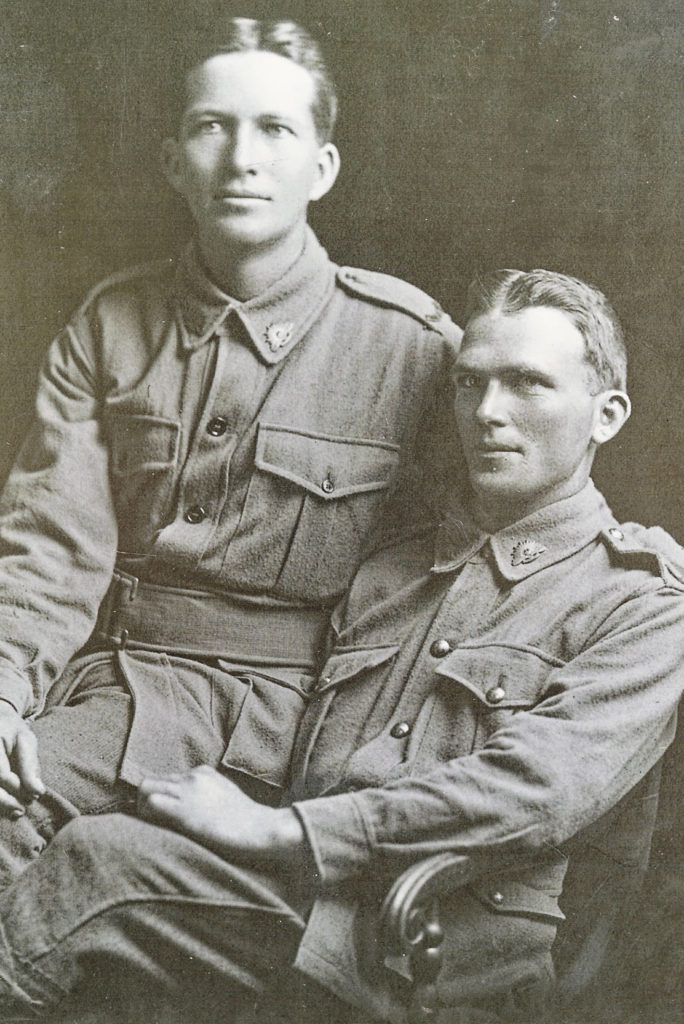
Photo by Dave Gaddis, copied from a newspaper article.
Fast forward to 2006, and just outside of Polygon Wood a road construction crew found human remains under a road. The construction manager called battlefield archeologist / historian Johan Vanderwalle at his café / museum and asked him to come quickly. He didn’t want the project to be delayed, but knew he had to stop after the discovery. Working in accordance with state regulations, over the next several days Johan and his team found and removed a total of five bodies. Three of the bodies, including John’s body, were identified through DNA sampling. John’s body was wrapped in a groundsheet and was, therefore, better-preserved. It was John’s niece Molly who ultimately told the story of the two brothers to Johan. In 2007, Private J. Hunter, 49th Battalion Australian Infantry, would be buried in the Commonwealth War Grave Commission’s Buttes New British Cemetery, just a few hundred yards away. His headstone would read: “Beloved son of Harry and Emily Hunter, Nanago, QLD. At rest after being lost for 90 years.”
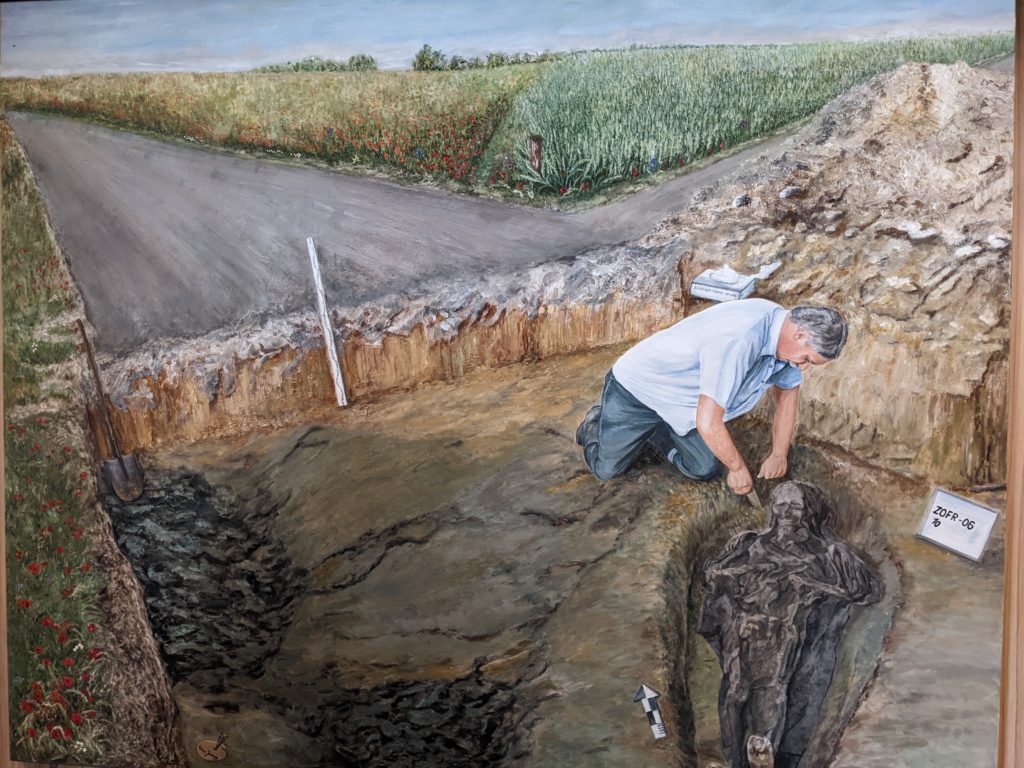
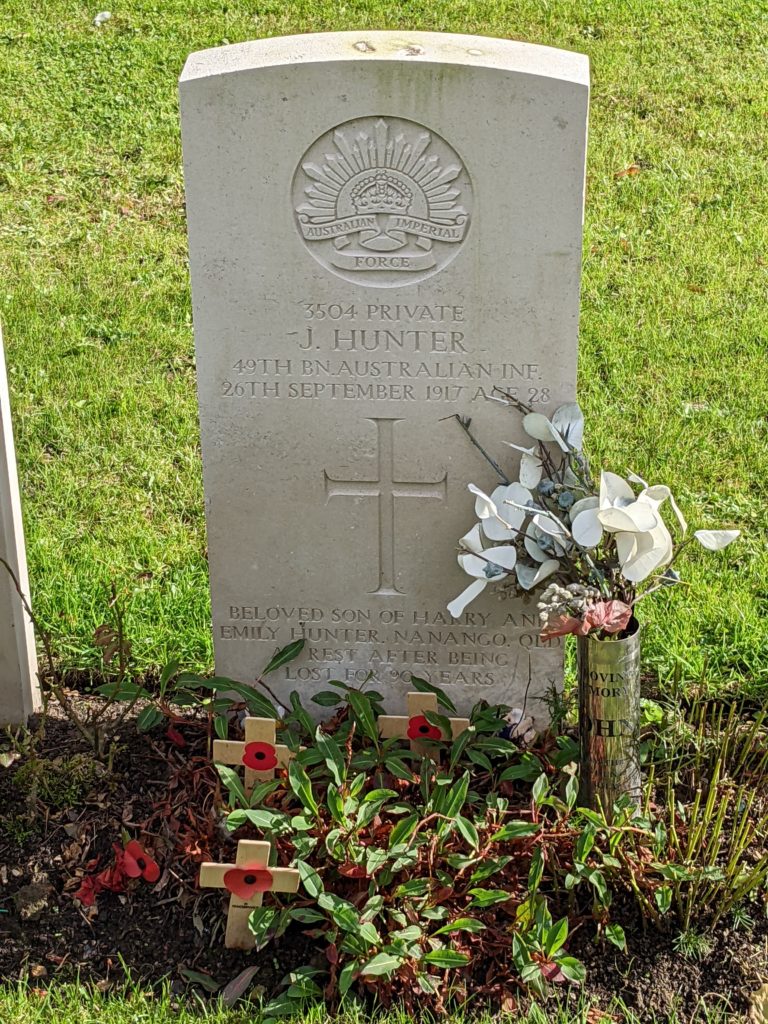
But the story did not stop there. Over the next several years Johan and friends developed the idea to create a memorial park in Zonnebeke. They intended to have the centerpiece be a sculpture of James holding his dying brother John in his arms. This was to represent the families (especially Australian) who sent more than one family member to war.
An association, Brothers in Arms Memorial Project, was established, funding was secured from an Australian philanthropist and an Australian sculptor was selected to create the sculpture based upon family photos of John and James. One can only imagine the challenges of getting all parties on board and moving forward in the same direction, with the Covid-19 pandemic adding to that challenge in recent years. I should also mention that the sculpture, created in Australia, was life-size and it ended up weighing 800kg, or 1,760lbs, and the project ended up costing 160,000 Euros!
Finally, in mid-2022 things were coming to a head: The sculpture was shipped to Belgium, where it was loaded onto a WW1-era truck and transported to the memorial park. On 25 September 2022 it was set in place on the memorial’s concrete pedestal—105 years since the Battle of Polygon Wood and 16 years after John’s body was discovered!
Just days after the 2022 ceremony, tour guide Markus Klauer introduced me and KDIH’s tour participants to Johan Vanderwalle at his Café Taverne de Dreve in Zonnebeke, and we listed as he passionately told this multi-year story. Sometimes we had to fight back a tear.
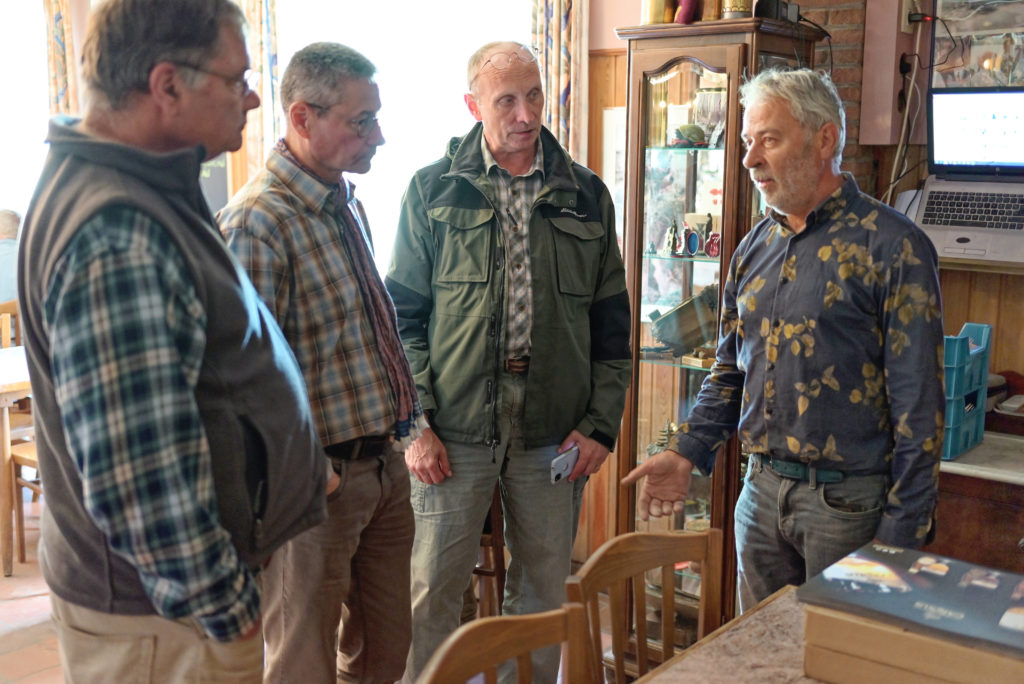
I wish so badly that I could have had played a role in such a grand story besides just retelling it! It was such a beautiful tale of effort and closure, spanning continents and decades. And then I am reminded that, as a battlefield tour guide, I have helped many people better understand the experiences of their relatives who fought “over there,” and I am grateful for those small opportunities to make a difference.
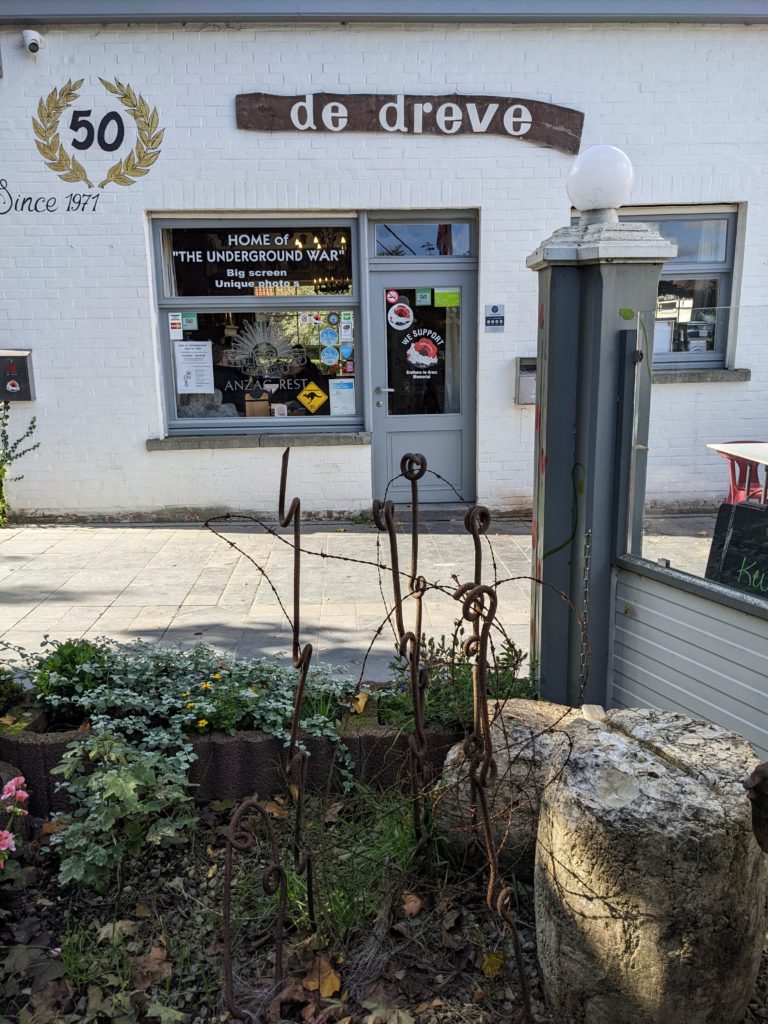
Here is a link to the Facebook Page for the Brothers in Arms Memorial Project:
https://www.facebook.com/profile.php?id=100067053106208
#flandersfields #flanders #ww1tour #kneedeepintohistory
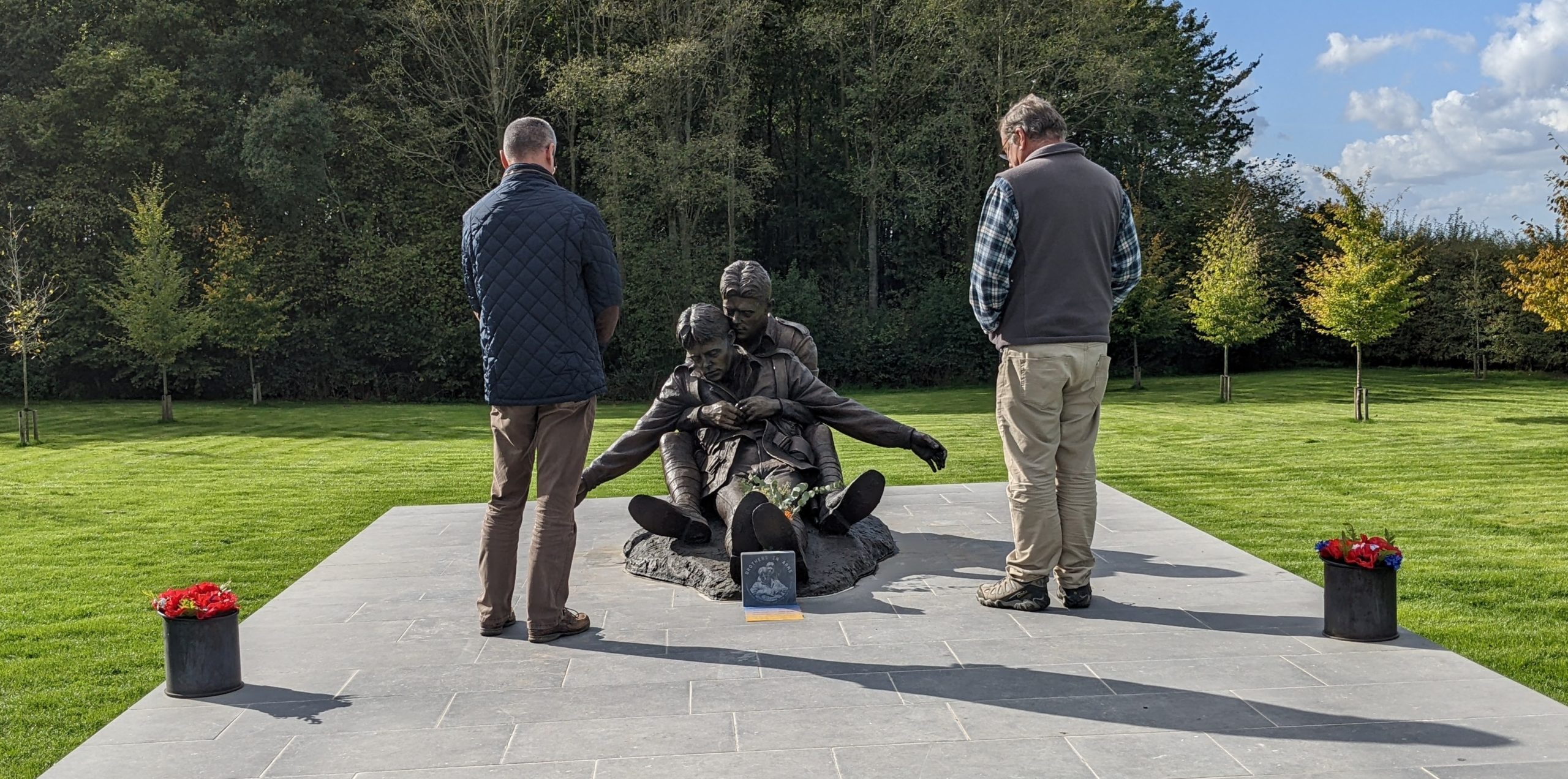
A very special memorial and have visited three times over the past three years. Johann has worked hard to keep this memorial ‘alive’. The memorial itself tells a sad tale, but it also makes one think about the futility of wars and the vanities of leaders who send young men into battle.
This old man also shed a tear reading this wonderful story.
Ken
It really was.